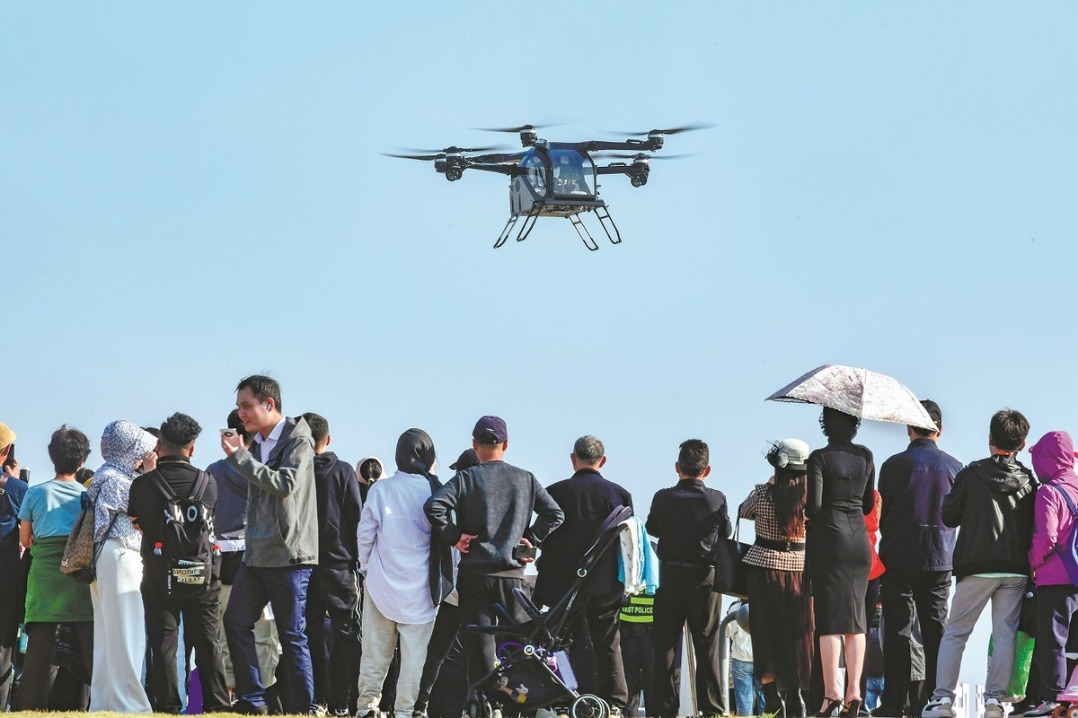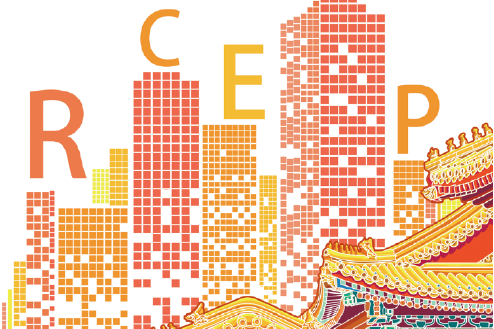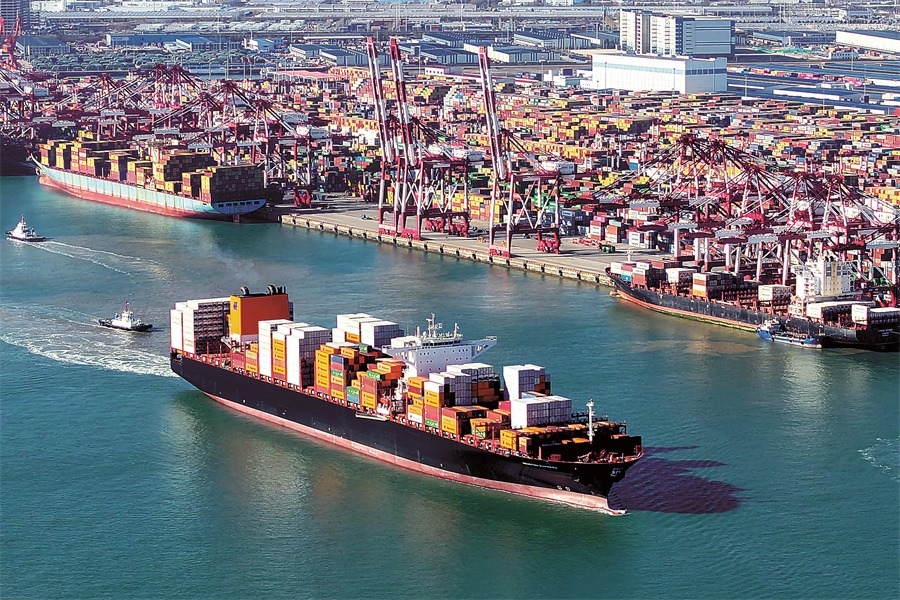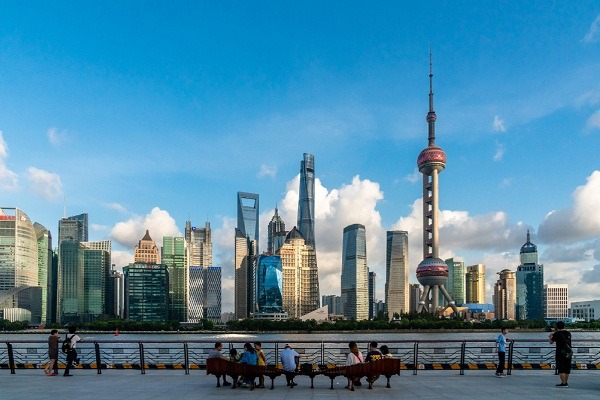Anchor of stability
The 'ASEAN Way' prioritizes a non-confrontational method for addressing issues that can be foundational for the making of a peaceful multipolar world


This May, alongside the 46th ASEAN Summit, Kuala Lumpur will bring the Association of Southeast Asian Nations, Gulf Cooperation Council and China together for the inaugural ASEAN-China-GCC summit. This will be one of the most important events of this year, aiming to enhance trilateral cooperation among the three key geopolitical and economic blocs and foster deeper ties among the participating regions.
Facing the geopolitical pressure driven by China-US rivalry, ASEAN has made it clear that it does not want to pick sides in the competition between major countries. It is striving to balance relations with the two powers while emphasizing dialogue, diplomacy, economic cooperation, regional integration and stability. In dealing with any emerging crisis within a member state or inter-state conflicts among member states, ASEAN's problem-solving approach is consensus, non-interference and quiet diplomacy. Unlike the West's confrontational value-based approach to any internal or external conflict, ASEAN's problem-solving approach enables member states to resolve disputes peacefully while maintaining unity and fostering cooperation. This characteristic approach is identified as the unique "ASEAN Way".
The concept of the "ASEAN Way "refers to a conflict-resolution approach that aligns with the cultural-historical norms of Southeast Asia. It is regarded as an effective tool for managing disputes through informal and personal diplomacy. Policymakers rely on compromise, consensus and consultation, ensuring that decisions are made collectively without direct confrontation. Above all, this approach prioritizes a non-confrontational, consensus-driven method for addressing issues. Quiet diplomacy allows ASEAN leaders to engage in discussions privately, preventing public scrutiny and avoiding situations that could escalate tensions or cause embarrassment among member states.
The multipolar world is coming as rapidly as the old order is fragmenting. The world has begun to see bridges built across disparate multilateral mechanisms such as BRICS, the Shanghai Cooperation Organization, the African Union, the GCC and ASEAN. Today, ASEAN has emerged as a key global player. Several ASEAN countries have shown interest in joining or aligning with BRICS. In January, Indonesia was formally admitted as a new BRICS member, while Thailand was granted partner country status. Vietnam, though not yet a BRICS member, has demonstrated growing interest in collaborating with the group. Singapore, another ASEAN nation, remains outside BRICS but maintains robust economic ties with key BRICS members, particularly China and India. Malaysia has expressed a willingness to cooperate with BRICS, particularly as it seeks to bridge BRICS with ASEAN and to enhance trade and investment ties with non-Western economies.
A multipolar world is taking shape organically. The "Collective West", until recently so triumphant, has to share the stage. The post-Cold War globalization led by the United States is coming to an end, and the world is re-globalizing with new relationships and institutions and rising powers.
In 2023, ASEAN held its first summit with the GCC, comprising Saudi Arabia, Kuwait the United Arab Emirates, Qatar, Bahrain and Oman, weeks after war broke out again in the Middle East. The combined GDP of ASEAN and the GCC is nearly $6 trillion, with $110 billion in trade volume. While both are open blocs committed to neutrality and good relations with both the West and its designated adversaries, both clearly feel the need to broaden their partnerships and find new avenues of cooperation beyond the zero-sum framework of contemporary Western international relations.
This year's ASEAN meetings, chaired by Malaysia, come at a turning point in the transition to a multipolar world order, amid sanctions, trade warfare, export restrictions, war and the threat of widening war. In Donald Trump's second term, the US has made a historic ideological break with liberal internationalism and US Secretary of State Marco Rubio has conceded that unipolarity is over.
For ASEAN, it is important to broaden its multilateralism and to avoid entrapment in a framework of aggressive alliances such as Quad and AUKUS that would inevitably destroy the peace and security of the region and ride roughshod over its treasured "ASEAN centrality".ASEAN prioritizes trade, economic development and regional integration over becoming entangled in the US obsession to contain China. The likelihood of a "Gulf-Southeast Asia convergence" is growing stronger as a pole of Asian strategic autonomy in reshaping trade patterns, diplomatic alliances and security frameworks for a multipolar world.
The Global South can unite easily because its members already have much in common and uphold a largely shared set of values, explicit or implicit, about how states should relate to each other. They treat each other as equals and respect each other's sovereignty and territorial integrity hard-won through struggles against colonialism and Western aggression. ASEAN practices these principles as the "ASEAN Way", an open regionalism that favors consensual, socially dense processes of decision-making while disavowing security alliances against third parties.
The "ASEAN Way" and China's "neighbor as priority" share several similarities. The Chinese "neighbor as priority" is a diplomatic strategy aimed at building stable and cooperative relations with neighboring countries, particularly ASEAN countries. This policy is rooted in economic engagement, security cooperation and cultural ties, with a strong emphasis on regional stability and mutual benefits. Both approaches reflect a desire to promote cooperation and harmony within the region while avoiding conflict and external interference. A key pillar of this relationship is the Regional Comprehensive Economic Partnership, the world's largest free trade agreement, which further solidifies China-ASEAN economic integration.
China's trade with ASEAN has experienced significant growth over the years. Between 2004 and 2023, the bilateral trade volume grew at an average annual rate of 11 percent, surging from around $120.6 billion to $911.7 billion. This growth rate was 3 percentage points higher than China's overall foreign trade growth during the same period. As a result, ASEAN's share of China's total foreign trade increased from 9.2 percent in 2004 to 15.4 percent in 2023. In comparison, by 2024, the total goods trade between the US and ASEAN was estimated at $476.8 billion.
China and ASEAN regularly engage through summits, dialogues and forums, including the ASEAN-China Summit and the ASEAN Regional Forum. Despite ongoing disputes in the South China Sea, both sides remain committed to negotiating a Code of Conduct to address tensions peacefully. Additionally, initiatives such as the Confucius Institutes, scholarships and cultural exchange programs are fostering stronger connections and mutual understanding between China and ASEAN.
It is not by accident that China and ASEAN have this overlapping consensus. Despite its Cold War origin, ASEAN consciously inherited the foundational ideals of the Bandung Conference — most notably, the Five Principles of Peaceful Coexistence — as a guiding framework for regional diplomacy. They represent the shared values of the Global South. Together, China and ASEAN are anchoring in Asia the making of a multipolar world through peaceful multilateralism.



Li Xing is a Yunshan leading scholar, director of the European Research Center at Guangdong University of Foreign Studies, and an adjunct professor of international relations at Aalborg University, Denmark. John Pang is a senior fellow at the Belt and Road Initiative Caucus for Asia Pacific in Malaysia. The authors contributed this article to China Watch, a think tank powered by China Daily.
Contact the editor at editor@chinawatch.cn.


































